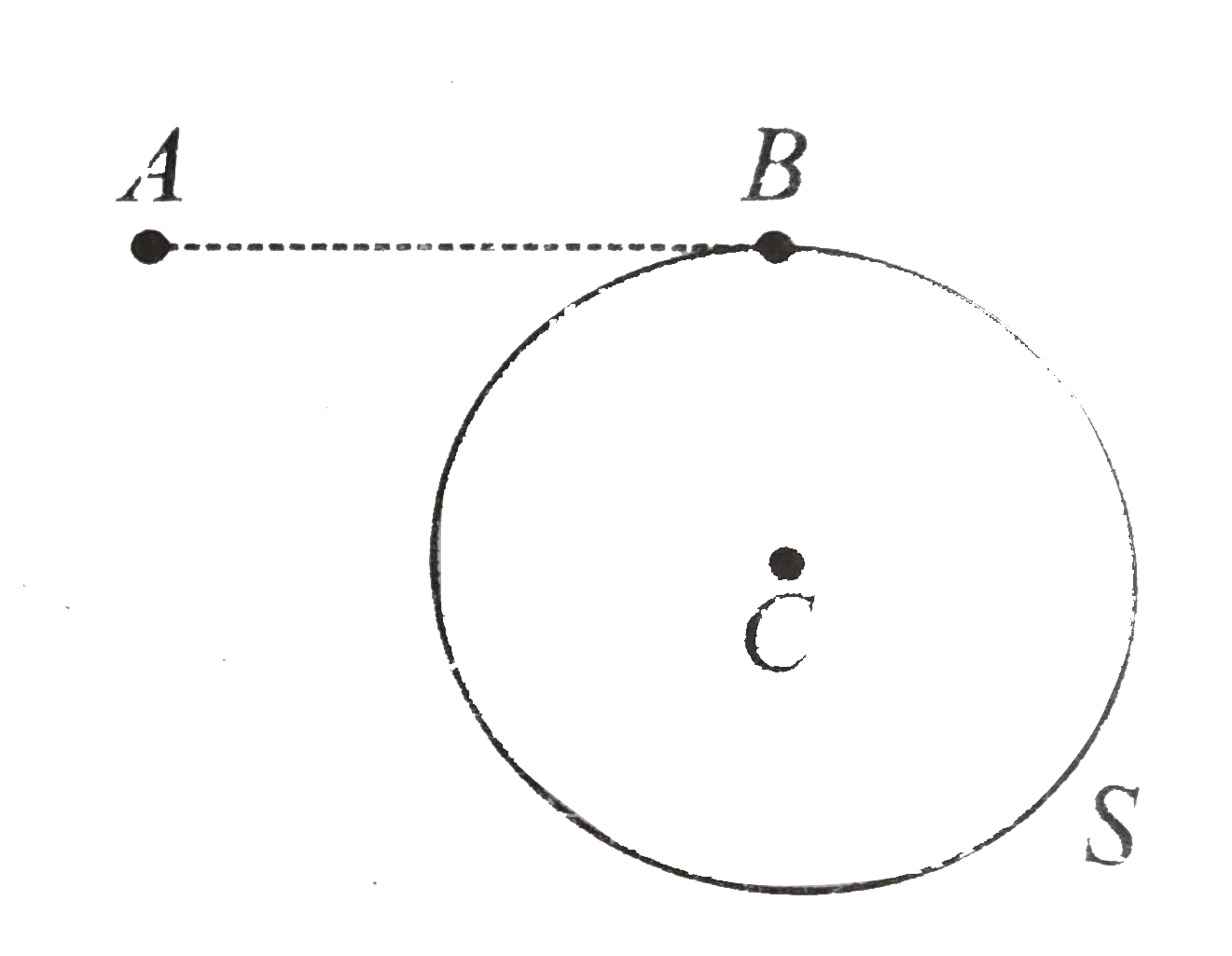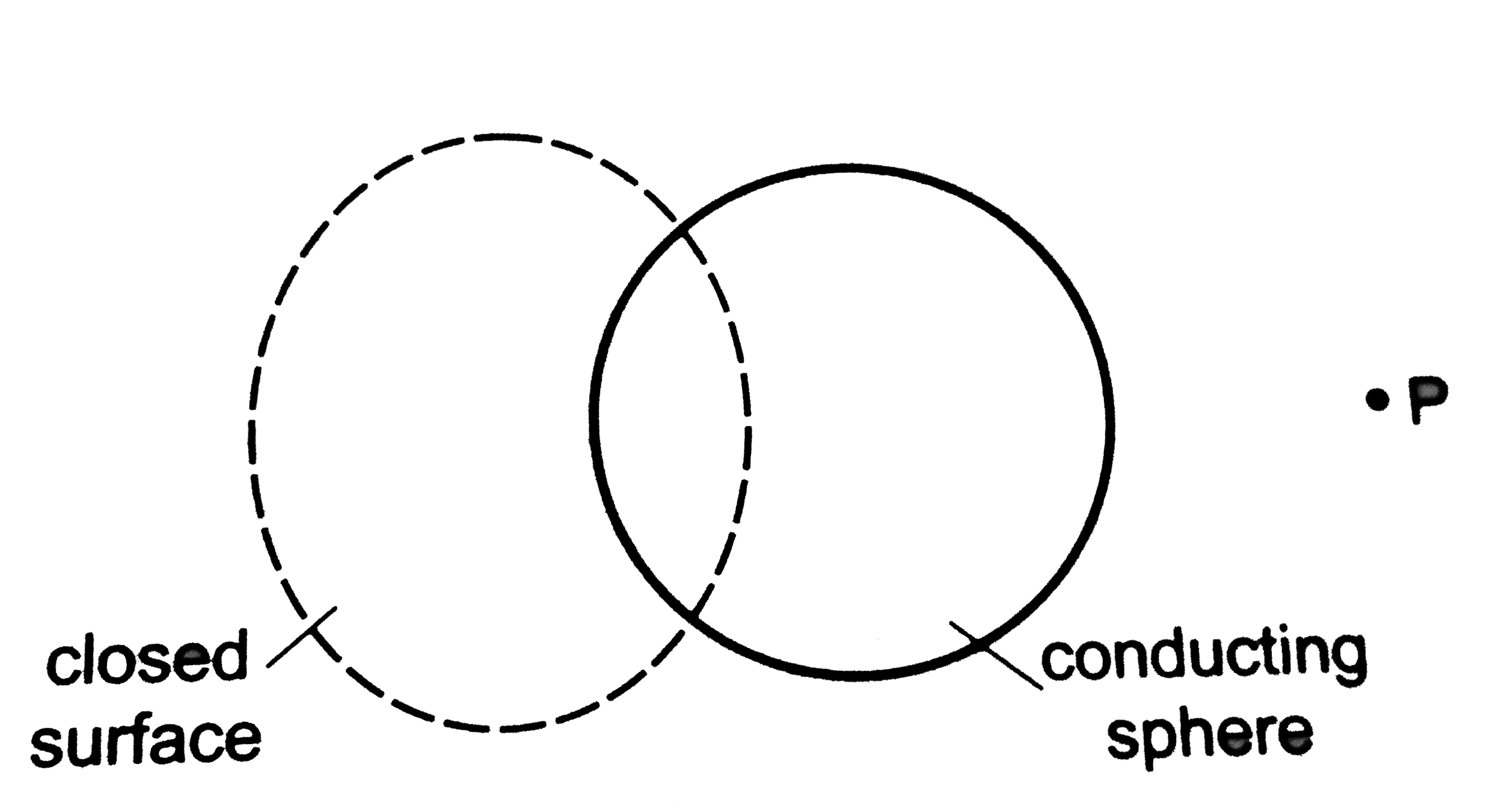Conisder a neutral conducting sphere. A poistive point charge is placed outisde the sphere. The net charge on the sphere is then
Negative and distributed uniformly over the surface of the sphere
Negative and appears only at the point on the sphere closed to the point charge
Negative and distributed non-uniformly over the entire surface of the sphere
zero
The correct Answer is:D
To solve the problem, we need to analyze the situation involving a neutral conducting sphere and an external positive point charge. Here’s a step-by-step breakdown of the solution:
Step 1: Understand the Initial Condition
- We start with a neutral conducting sphere. This means that the total charge on the sphere is zero, with an equal number of positive and negative charges (protons and electrons).
Hint: Remember that a neutral object has no net charge, meaning the number of positive and negative charges are equal.
Step 2: Introduce the External Positive Charge
- When a positive point charge is placed outside the conducting sphere, it creates an electric field around it. This electric field influences the charges within the conducting sphere.
Hint: Consider how electric fields affect charges in conductors. Positive charges attract negative charges and repel positive charges.
Step 3: Induction of Charges
- The external positive charge will attract the negative charges (electrons) within the conducting sphere towards the side of the sphere that is closest to the positive charge. This results in a separation of charges within the sphere: negative charges accumulate on the side nearest to the positive charge, while positive charges are pushed away to the opposite side.
Hint: Think about how conductors respond to external electric fields. Charges redistribute themselves to maintain electrostatic equilibrium.
Step 4: Net Charge on the Sphere
- Despite the separation of charges, the total amount of charge on the conducting sphere remains unchanged. Since the sphere was initially neutral, it still has a net charge of zero. The charges are simply redistributed but not created or destroyed.
Hint: Remember that the law of conservation of charge states that charge cannot be created or destroyed in an isolated system.
Step 5: Conclusion
- Therefore, the net charge on the conducting sphere remains zero, even though there is a distribution of charges due to the influence of the external positive charge.
Final Answer: The net charge on the sphere is zero.
---
- We start with a neutral conducting sphere. This means that the total charge on the sphere is zero, with an equal number of positive and negative charges (protons and electrons).
- When a positive point charge is placed outside the conducting sphere, it creates an electric field around it. This electric field influences the charges within the conducting sphere.
- The external positive charge will attract the negative charges (electrons) within the conducting sphere towards the side of the sphere that is closest to the positive charge. This results in a separation of charges within the sphere: negative charges accumulate on the side nearest to the positive charge, while positive charges are pushed away to the opposite side.
- Despite the separation of charges, the total amount of charge on the conducting sphere remains unchanged. Since the sphere was initially neutral, it still has a net charge of zero. The charges are simply redistributed but not created or destroyed.
- Therefore, the net charge on the conducting sphere remains zero, even though there is a distribution of charges due to the influence of the external positive charge.
Topper's Solved these Questions
- ELECTROSTATICSBOOK - DC PANDEY ENGLISHCHAPTER - ELECTROSTATICSEXERCISE - Check point 1.2
15 Videos
- ELECTROSTATICSBOOK - DC PANDEY ENGLISHCHAPTER - ELECTROSTATICSEXERCISE - Check point 1.3
10 Videos
- ELECTROSTATICSBOOK - DC PANDEY ENGLISHCHAPTER - ELECTROSTATICSEXERCISE - SUBJECTIVE_TYPE
6 Videos
- ELECTROSTATIC POTENTIAL AND CAPACITORSBOOK - DC PANDEY ENGLISHCHAPTER - ELECTROSTATIC POTENTIAL AND CAPACITORSEXERCISE - (C) Chapter exercises
50 Videos
- GRAVITATIONBOOK - DC PANDEY ENGLISHCHAPTER - GRAVITATIONEXERCISE - All Questions
135 Videos
Similar Questions
S is a solid neutral conducting sphere. A point charge q of 1×10−6C is placed at point, C is the center of sphere, and AB is a tangent. BC = 3 m and B = 4m.

View SolutionA positive point charge q is brought near a neutral metal sphere.
View SolutionA conducting sphere carrying charge Q is surrounded by a spherical conducting shell.
a. What is the net charge on the inner surface of the shell?
b. Another charge q is placed outside the shell. Now, what is the net charge on the inner surface of the shell?
c. If q is moved to a position between the shell and the sphere, what is the net charge on the inner surface of the shell?
d. Are your answer valid if the sphere and shell are not concentric?
View SolutionInside a neutral hollow conducting sphere of radius X and centre C, a point charge q is placed as shown in the figure. Another point charge q1, is placed outside the sphere at distance d from centre. The net- electrostatic force on charge q placed at the centre is K=14πε0

View SolutionA conducting sphere of radius r has a charge . Then .
View SolutionConsider two concentric conducting spheres. The outer sphere is hollow and initially has a charge −7Q on it. The inner sphere is solid and has a charge +2Q on it.
a. How much charge is on the outer surface and inner surface of the outer sphere.
b. If a wire is connected between the inner and outer sphere, after electrostatic equilibrium is established how much total charge is on the outer sphere? How much charge is on the outer surface and inner surface of the outer sphere? Does the electric field at the surface of the inside sphere change when the wire is connected?
c. We return to original condition in (a). We now connect the outer sphere to ground with a wire and then disconnect it. How much total charge will be on the outer sphere? How much charge will be on the inner surface and outer surface of the outer sphere?
View SolutionFigure shown a closed surfce which intersects a conducting sphere. If a positive charge is placed at the point P, the flux of the electric field through the closed surface

View Solution
consider a neutral conducting sphere of radius a with a spherical cavity of radius b. A charged conducting sphere of radius c is placed in cavity . Centre of this sphere coincide with centre of cavity charge on the inner sphere is q total self energy of this arrangement is:
View SolutionTwo metallic spheres of radii a and b are placed faraway from each other and are connected for a thin conducting wire. A charge Q is given to one of the spheres . Calculate the charge on each sphere at electrostatic equilibrium.
View SolutionTwo conducting spheres of radius R and 3R carry charges Q and −2Q. Between these spheres a neutral conducting sphere of radius 2R is connected. The separation between the sphere is considerably large Charge flows through conducting wire due to potential difference.

The final charge on initially neutral conducting sphere is :
View Solution
